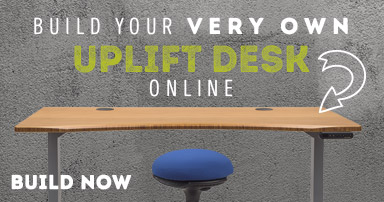Ergonomic Evolution in Five Stages
Posted by Human Solution on Feb 10th 2011
As much as I like to sell chairs, I have some bad news: humans simply were not made to sit all day long. This is not terribly surprising when you consider that millions of years of evolution in environments that required our ancestors to walk, run, lift, throw, plant, etc. have given way in the last century to jobs that demand many of us to sit still for long hours every day.
Because of this, ergonomics is, in some ways, a science of making the best of a less-than-optimal situation. While I stop short of recommending all my readers quit their office jobs and become bike messengers, there are steps you can take to minimize or at least break up your sitting through the day.
Dr. Connie Amundson sums up the development of these steps as an “evolution” of ergonomic design:
- Sitting: Ergonomists designed office chairs that positioned the body in ideal neutral angles and adjusted for users of different body sizes. Most of the chairs we offer, such as the Ergohuman, fit this description.
- Kneeling: Putting weight on the knees and forcing the body to balance upright increases circulation and can help posture, at least for short periods. Our Varier Variable is a good example of a chair like this.
- Bouncing: This has similar benefits to the kneeling chair with the addition of dynamic motion as your body balances. The Via Swopper is a chair we offer that encourages this.
- Standing: Working from a standing position involves even more body muscles than a bouncing or kneeling seating solution and is one of my personal favorite ways to work. A height adjustable desk like the Mayline Varitask is a good choice for this.
- Walking: Pairing a standing desk with a treadmill combines physical exercise with office work. Our Steelcase Walkstation lets you achieve this.
A final word: while static seating is not ideal 100% of the time, it is more or less unavoidable for at least part of the day. Standing, bouncing, etc. are simply too tiring for most people to perform for 8+ consecutive hours and will eventually cause pains of their own. Because of this, a good traditional ergonomic office chair is still an essential addition to most people’s workstation. if you’re ready to go above and beyond, however, one of the other stages of ergonomic evolution might be for you.
Source: Ergonomic Evolution’s Blog




